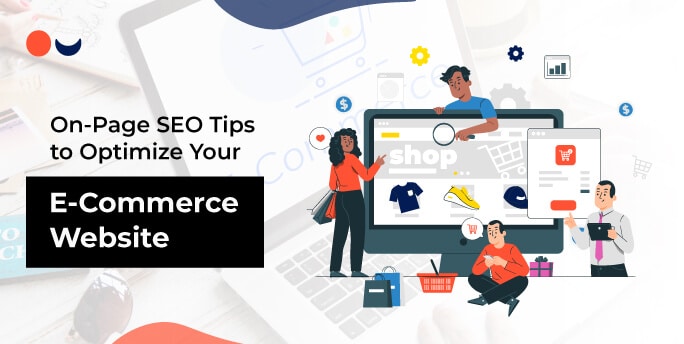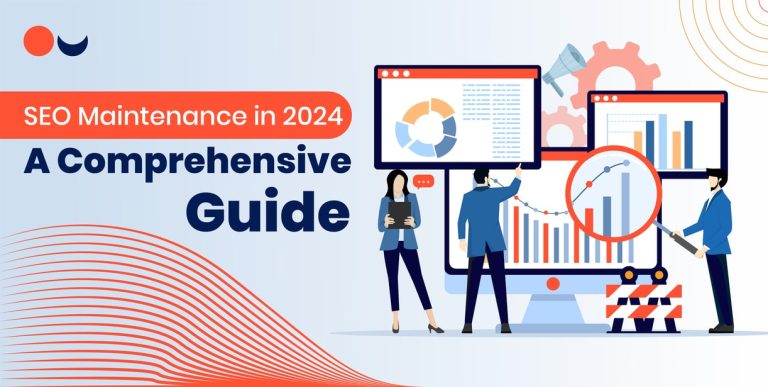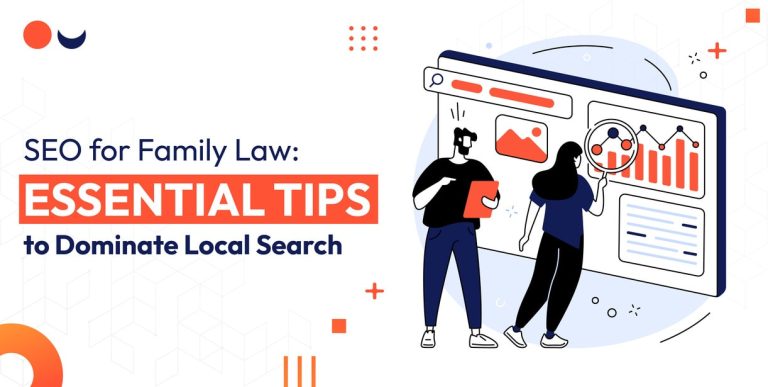Establishing a solid online presence is critical for the success of your business in the fast-evolving world of e-commerce. With so many websites competing for attention, effectively boosting your exposure and increasing organic visitors is critical. On-page SEO for e-commerce is one such method. Increase your search engine results and bring more relevant visitors to your e-commerce website by optimizing the on-page aspects of your website.
On-page SEO is critical for e-commerce and must be recognized. You want your website to appear prominently in search results when potential customers search for products or services linked to your business. Individual web pages are optimized using on-page SEO tactics to make them more search-engine friendly. By concentrating on on-page SEO and optimizing various aspects such as content, HTML tags, meta descriptions, headings, and URLs, you may increase the relevance and authority of your website, increasing its chances of appearing in the top search results.
Tips to Optimize Your E-Commerce Website
To optimize your e-commerce website effectively, there are several key strategies you should implement:
1. Conduct thorough keyword research:
Any successful On-page SEO for e-commerce approach is built on keyword research. Begin by generating a list of keywords linked to your products or services. Additional keyword ideas can be discovered using Google Keyword Planner, SEMrush, or Ahrefs. Analyze each term’s search volume and competition level, and select those that strike a reasonable balance between search traffic and competition. Consider targeting long-tail keywords, which are longer and more specialized phrases with lower competition and the potential to bring highly targeted traffic.
2. Optimize meta tags:
On-page SEO relies heavily on meta tags, such as the meta title and meta description. These tags display in search engine results and provide a quick overview of the content of your web page. Ensure your meta tags adequately describe the page’s content and include relevant keywords. To persuade users to click on your website, keep them brief, intriguing, and enticing.
3. Create unique and descriptive product descriptions:
Avoid utilizing product descriptions provided by the manufacturer that are replicated across several websites. Instead, create distinctive and interesting product descriptions that showcase your items’ features, benefits, and unique selling points to maximize their appearance in search engine results, and incorporate relevant keywords naturally into your descriptions.
4. Utilize header tags:
Use header tags (H1, H2, H3, etc.) to organize your text. These tags give your web page a hierarchical structure, making it easier for search engines to understand the organization and relevancy of your information. To indicate the importance of your target keywords to search engines, incorporate them naturally into your headlines.
5. Optimize your URLs:
Make sure your URLs are clean, descriptive, and contain important keywords. Avoid using long, complicated URLs with extraneous parameters or integers—a simple URL structure and keyword-rich can increase the readability and shareability of your links.
6. Optimize your images:
Images play an important role in e-commerce websites, which can help with search engine rankings. For your product photos, use meaningful file names and alt tags. Descriptive file names should contain relevant keywords, while alt tags give alternate language for visually challenged users and assist search engines in understanding the image’s content. Reduce page load times by compressing your photos, as faster-loading sites boost user experience and search engine rankings.
7. Improve page loading speed:
Page loading speed is an important consideration for user experience and search engine rankings. Reduce code, use browser caching, compress data, and optimize server response times to improve the performance of your website. Make sure your e-commerce website loads swiftly on all devices and browsers.
8. Implement structured data markup:
Structured data markup, such as schema.org tags, gives search engines more information about your products and increases the visibility of your website in search results. You may improve the display of your website in search engine results and raise click-through rates by utilizing structured data markup.
In addition to these techniques, creating high-quality and interesting content is critical for the success of your e-commerce website. Product descriptions, customer reviews, and blog entries that are unique and helpful can help enhance search engine rankings and drive organic visitors.
On-page SEO for e-commerce is a continual process that necessitates constant monitoring and optimization. Analyze your website’s performance regularly, track keyword rankings, and make required adjustments to ensure continual improvement. In the extremely competitive online industry, you may improve your knowledge on what is On-page SEO, and e-commerce website exposure, attract relevant traffic, and increase conversions by employing effective on-page SEO tactics and offering quality content.
What Is On-Page SEO?
On-page SEO for e-commerce refers to the tactics and practices used to improve the visibility and rankings of individual web pages in search engine results pages (SERPs). It entails making various parts more search engine friendly, such as content, HTML tags, meta descriptions, headings, and URLs. By focusing on On-page SEO for e-commerce, you may increase the relevance and authority of your website, making it more likely to appear prominently in search results.
Why Is On-Page SEO Important for E-Commerce?
On-page SEO is critical for directing targeted visitors to your e-commerce website. Effective on-page optimization increases the likelihood that your website will show among the top search results when potential customers search for products or services connected to your business; that is why on-page SEO for e-commerce is important. Higher rankings imply greater visibility and, as a result, more potential clients visiting your website. You may raise your chances of getting organic visitors and increasing conversions by optimizing your e-commerce website for on-page SEO.
E-Commerce Keyword Research
Any successful on-page SEO approach is built on keyword research. It entails determining and targeting the keywords your prospective clients will likely use when searching for items or services. Conducting thorough keyword research is critical for e-commerce websites to optimize their content.
Here are some tips for e-commerce keyword research:
1. Identify relevant keywords: Generate a list of keywords linked to your products or services. Use tools like Google Keyword Planner, SEMrush, or Ahrefs to find new keyword suggestions.
2. Analyze search volume and competition: Evaluate each keyword’s search volume and competition level. Choose keywords with a good balance between search volume and competition.
3. Long-tail keywords: Consider targeting long-tail keywords, which are longer and more specific keyword phrases. Long-tail keywords often have lower competition and can attract highly targeted traffic.
4. Competitive analysis: Analyze the keywords used by your competitors. Identify keywords performing well for them and consider incorporating them into your strategy.
5. Focus on buyer intent: Keep the search purpose in mind when conducting keyword research. Determine terms that imply a high level of purchasing intent, such as “buy,” “best,” “discount,” or “review.” Targeting these phrases can help you attract customers who are ready to buy.
6. Use keyword variations: Don’t restrict yourself to just one keyword variety. Experiment with variations and synonyms of your main keywords to catch a broader range of search queries. This method can assist you in ranking for various keyword variations and reaching a larger audience.
7. Consider local keywords: Incorporate local keywords into your study if your e-commerce business operates in specific locations. This is especially significant if you have physical locations or provide regional shipping. Incorporating location-specific keywords can assist you in targeting local clients and increasing your chances of appearing in localized search results.
8. Leverage long-tail keyword modifiers: Add modifiers to your keywords to increase their specificity. Modifiers include the adjectives “best,” “top,” “cheap,” “new,” and “affordable.” If you offer running shoes, for example, consider targeting long-tail keywords such as “best running shoes for beginners” or “affordable running shoes for women.” These modifications can assist you in attracting users.
Optimizing Your Content for On-Page SEO
Once you have identified the relevant keywords for your e-commerce website, it’s time to optimize your content. Here are some essential tips to improve your On-page SEO for e-commerce websites:
1. Optimize your meta tags: Your meta title and description should include relevant keywords and appropriately represent the page’s content. Keep them brief and appealing to persuade users to click.
2. Create unique and descriptive product descriptions: Avoid using product descriptions provided by the manufacturer, as they are sometimes replicated across many websites. Instead, develop distinctive and interesting descriptions that showcase your items’ features, benefits, and unique selling aspects. Incorporate important keywords into your descriptions naturally.
3. Utilize header tags: Use H1, H2, and H3 tags to structure your content. Incorporate your target keywords in these headings to signal their importance to search engines.
4. Optimize your URLs: Ensure that your URLs are clean, descriptive, and include relevant keywords. Avoid using long, complex URLs with unnecessary parameters or numbers.
5. Optimize your images: Use meaningful file names and alt tags for your product photos. This helps search engines understand the image’s information and makes it more accessible to visually impaired people. Reduce page load times by compressing your photos.
6. Improve page loading speed: Reduce code, use browser caching, and compress data to improve the performance of your website. Pages that load quickly boost both user experience and search engine rankings.
7. Implement structured data markup: Add structured data markup, such as schema.org tags, to provide additional information about your products to search engines. This can improve the visibility of your website in search results and raise click-through rates.
SEO Content for E-Commerce
In addition to the technical aspects of On-page SEO for e-commerce, creating high-quality and engaging content is crucial for your e-commerce website. Here are some tips to help you optimize your content for SEO:
1. Write unique and valuable product descriptions: Instead of generic descriptions, provide thorough and original material for each product. Highlight the benefits, features, and specs, and organically add essential keywords.
2. Add customer reviews and testimonials: Customer reviews and testimonials, for example, lend legitimacy to your items and help SEO. Customers should be encouraged to post reviews since search engines respect fresh and unique material.
3. Create informative blog posts: another technical aspect of SEO content for e-commerce is to create a blog area on your e-commerce website and write interesting and entertaining blog pieces regularly. This increases your authority in your niche, draws organic traffic, and allows for internal linking.
4. Optimize category pages: Ensure your category pages contain original and detailed material. Avoid using the same product descriptions in different categories. Include relevant keywords and useful information about the products in each category.
Benefits of on-page SEO
On-page SEO offers numerous benefits for your e-commerce website. Here are some of the key advantages:
1. Improved Search Engine Visibility:
Improved visibility in search engine results is one of the key advantages of on-page SEO. You can improve your website’s rating in search engine results pages (SERPs) by optimizing numerous on-page elements such as meta tags, headers, content, and URLs. Higher rankings imply that your website will receive greater visibility and organic visitors.
2. Targeted Organic Traffic:
On-page SEO helps you attract targeted organic traffic to your e-commerce website. By conducting thorough keyword research and optimizing your content accordingly, you can align your website with your target audience’s specific search queries and intents. This leads to higher-quality traffic that is more likely to convert into customers.
3. Increased Click-Through Rates (CTRs):
Effective on-page optimization, such as intriguing meta titles and descriptions, can increase click-through rates on your website. Users are more inclined to click on your website when it shows in search results with well-crafted and relevant meta tags, resulting in increased traffic.
4. Enhanced User Experience:
On-page SEO tactics frequently entail improving your website’s user experience. A good user experience is enhanced by rapid page loading time, simple navigation, well-structured information, and optimized pictures. Visitors with a great experience on your website are more likely to remain longer, explore more pages, and potentially convert into customers.
5. Improved Conversion Rates:
On-page SEO not only increases traffic to your website, but it also optimizes it for conversions. You may improve the entire user experience and increase the possibility of visitors purchasing by giving unique and appealing product descriptions, displaying customer feedback, and optimizing the performance of your website. This can result in increased conversion rates and income for your e-commerce business.
6. Better Mobile Experience:
With the growing popularity of mobile devices, having a mobile-friendly website is essential. On-page SEO tactics include optimizing your website for mobile friendliness and quick mobile device loading time. This guarantees that your website provides a consistent experience for mobile users, increasing engagement and ranking in search engines for mobile queries.
7. Competitive Advantage:
Effective on-page SEO gives you a competitive advantage in e-commerce. By optimizing the on-page parts of your website, you can outperform competitors who may need to be working on SEO or who need more on-page optimization. This advantage can lead to higher rankings, increased visibility, and a larger market share for your e-commerce company.
8. Cost-Effective Strategy:
On-page SEO is a low-cost method for increasing the visibility of your website and driving organic visitors. While there may be some early fees for keyword research tools or SEO expertise, the long-term benefits of on-page optimization can surpass the original investment. Unlike paid advertising, on-page SEO may continue to drive organic traffic and deliver results even when you aren’t actively spending on it.
9. Long-Term Results:
On-page SEO can yield long-term benefits for your e-commerce website. You may develop a strong foundation that attracts organic visitors and improves search engine results over time by optimizing your on-page features and delivering excellent content. This long-term strategy secures your internet business’s long-term growth.
Finally, on-page SEO provides numerous advantages for your e-commerce website. Optimizing your website’s on-page features can greatly impact your online success, from greater search engine exposure and targeted traffic to enhanced user experience and conversion rates. You may improve your website’s performance, stand out from competitors, and promote long-term success for your e-commerce firm by spending time and effort in on-page SEO methods.
Conclusion
You must implement effective On-page SEO for e-commerce methods to optimize your e-commerce website and generate organic visitors. You may dramatically improve your website’s exposure in search engine results by completing rigorous keyword research, optimizing Meta tags, developing original content, and enhancing website performance. Remember to monitor your website’s performance frequently, analyze data, and make required changes to ensure continual improvement. In the extremely competitive world of e-commerce, a well-optimized website can enhance your chances of attracting potential clients and driving conversions.







